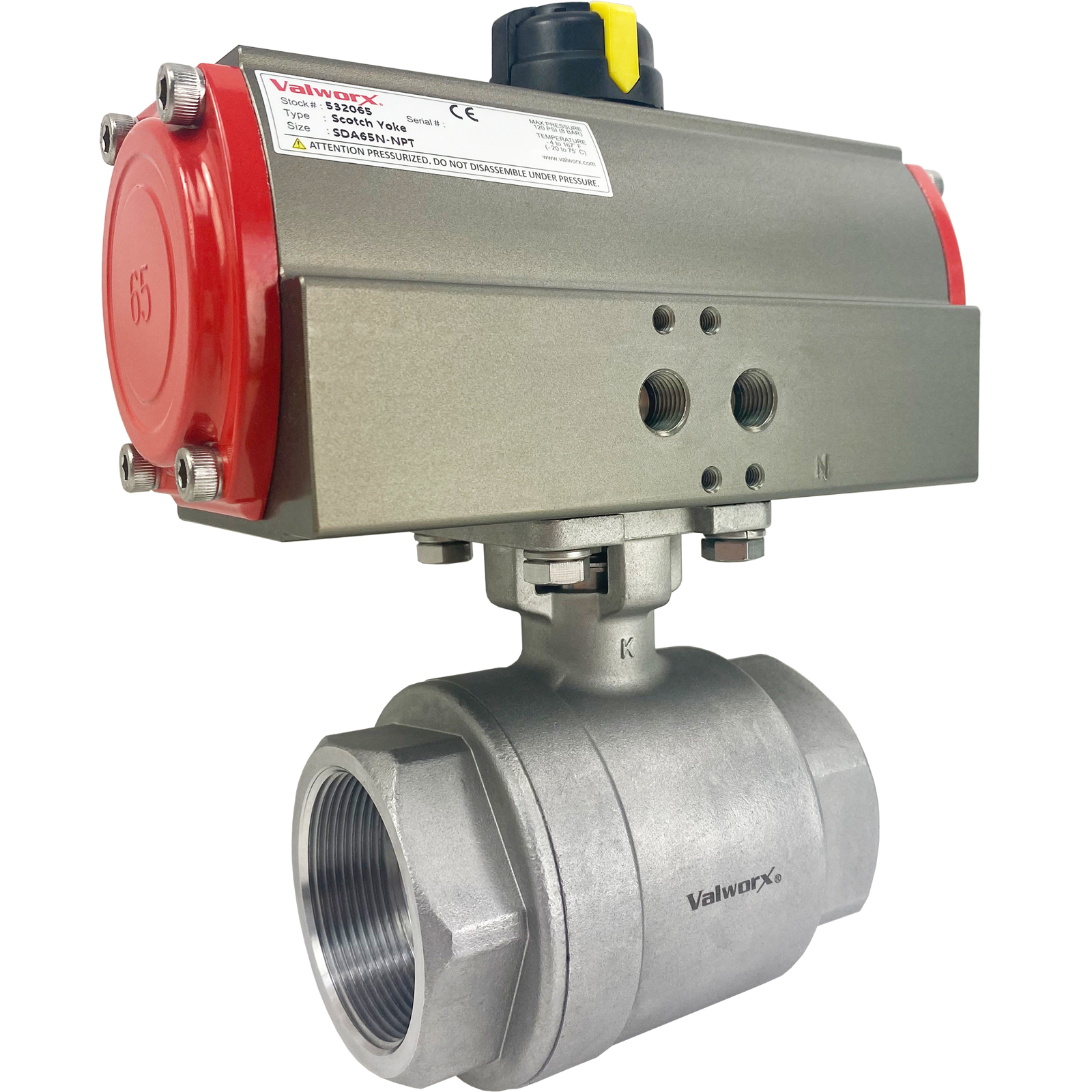The seamless coordination of solenoid and ball valves is vital in the world of fluid control. These components are not often recognized as protagonists in various industrial processes. They function as an active pair that can provide precise and automated fluid flow control. We’ll explore the worlds of solenoid valves and controlled valves. Let’s look at their uses and discover the symbiotic relationships that power fluid management.
Electrically controlled solenoid valves are the key component in a variety of applications. These valves provide quality and efficiency to the fluid-control systems through the piloting of air-actuated ball and butterfly valves. Solenoids are valves which respond to electrical impulses. They act as the orchestrators, and decide which fluid paths should be closed or opened.

Solenoid valves are compatible with both double-acting air and spring return actuators. They can be adapted to a wide range of operational demands due to their flexibility. Integration is made easier by the NAMUR mounting plate that is an international standard. This allows a direct connection with the air actuator.
Actuated Ball Valves for Powering Automated Fluid Positioning
A ball valve which is activated automates the actual motion of the valve. These valves are powered by pneumatic or electric actuators. They automatically move the valves to the desired location, allowing an effortless fluid management. The synergy that solenoid valves have with them extends the capabilities of ball valves that are actuated, creating a system where electronic precision meets mechanical movement.
In applications where precision and reliability are paramount, the actuated ball valve shines. The actuated ball valve’s accuracy in controlling fluid flow makes it a fantastic option for jobs that require control of on/off or changing control. The ball vales that are actuated are able to control the flow of air, water, oil and other compatible fluids.
Solenoid Ball Valve Precision with Air Actuated Ball Valve
A partnership between solenoid and air-actuated valves resembles to a orchestra in that each piece plays an important part in achieving a harmonious control of the flow. Solenoid valves, which react to electrical signals, which control the opening and closing of the path for fluid, are conducted by solenoid valves. This electrical signal directs the valve with air that has been actuated to perform a dance that precisely rotates to regulate flow.
The thing that makes this symphony extraordinary is the way it integrates the NAMUR mounting pad. This standard connection simplifies the assembly, but also provides a safe and efficient linkage to the solenoid and the air actuator. It is a seamless partnership that converts electrical signals to physical movement. This permits the highest level of precision to meet industrial requirements for application.
Navigating Modulation in the Dynamic World Ball Valve Control
Ball valves that are actuated or not, are famous for their flexibility in controlling fluids. Their ability to regulate the flow of air, water, oil and various other media makes them indispensable components in a variety of industries. Actuated ball valves, powered by the power of solenoid valves, bring this versatility to new heights.
Modulating control is critical when fluid demand is fluctuating. These scenarios are best served by ball valves actuated that are guided with precision via solenoids. Ball valves provide a flexible method to regulate fluid flow in a variety of ways, such as controlling the flow of water in cooling applications or regulating air release in the pneumatic system.
In the pursuit of optimal performance and long-lasting in the pursuit of optimal performance and durability, having the widest range of ball valves becomes essential. Industries need solutions that do not only meet their current needs but are also able to stand the test the test of time in various operational conditions. Ball valves can be found in a wide range of styles, with each one setting the standard for quality and performance.
There are numerous options available depending on whether you want a ball valve that is compact and manually operated or sophisticated and electrically operated. The process of choosing a valve is based on elements like the type of fluid that is used, the operating pressure, temperature and the particular requirements of the application. The extensive selection of fluids available guarantees that every industry will find the right solution for their individual needs.
Conclusion: The Precision Dance of Solenoid Valves and Actuated Ball Valves
Precision is essential when it comes to controlling fluids. This is why the combination of solenoid valves and balls valves that are controlled to the highest degree. The solenoid’s electrical control seamlessly connects to the mechanical strength of actuated valves to create a dance of precision that orchestrates fluid flows with unparalleled precision.
Each component in this symphony is playing a vital function. From the internationally recognized NAMUR mount pads, which ensure a secure connection, through the automated motions of actuated ball valves as a result of solenoid signals. The dynamic duo solenoid and actuated valves is a cornerstone for fluid management systems that seek durability, efficiency, and scalability.